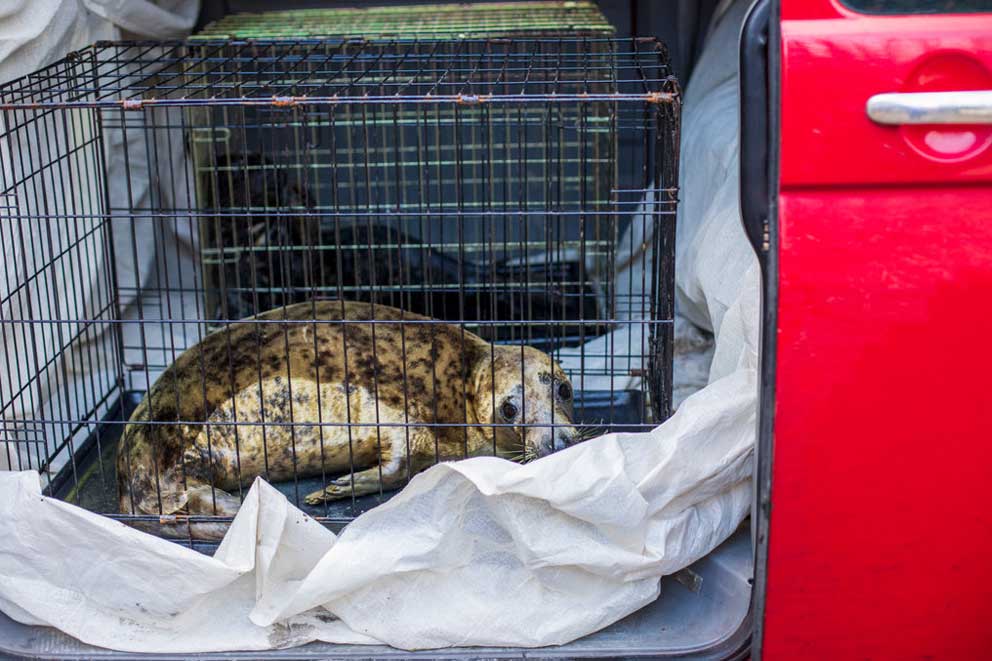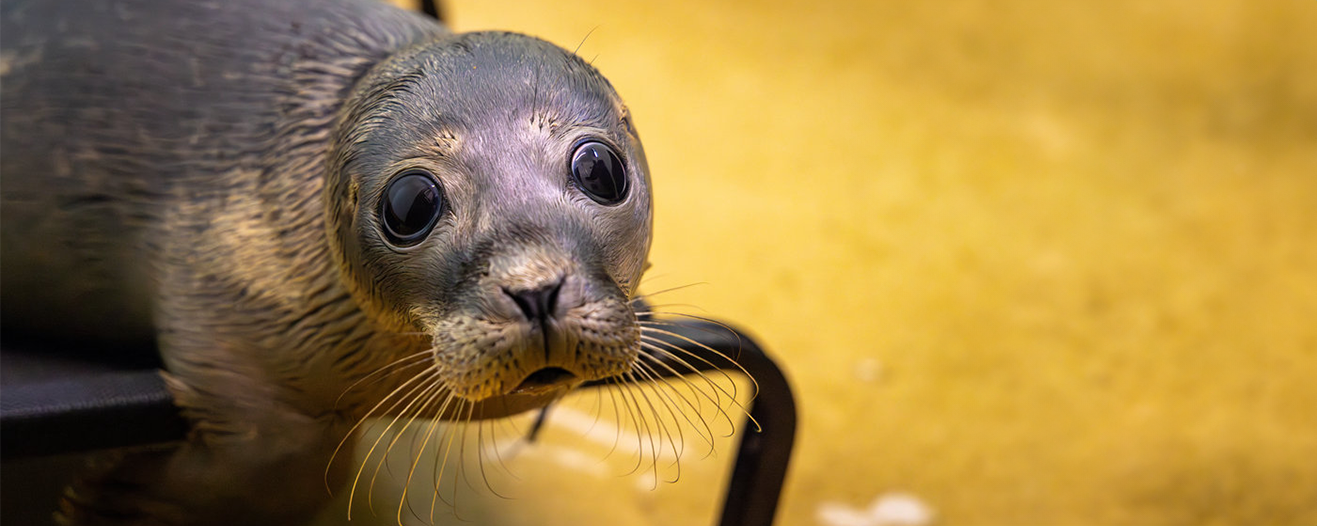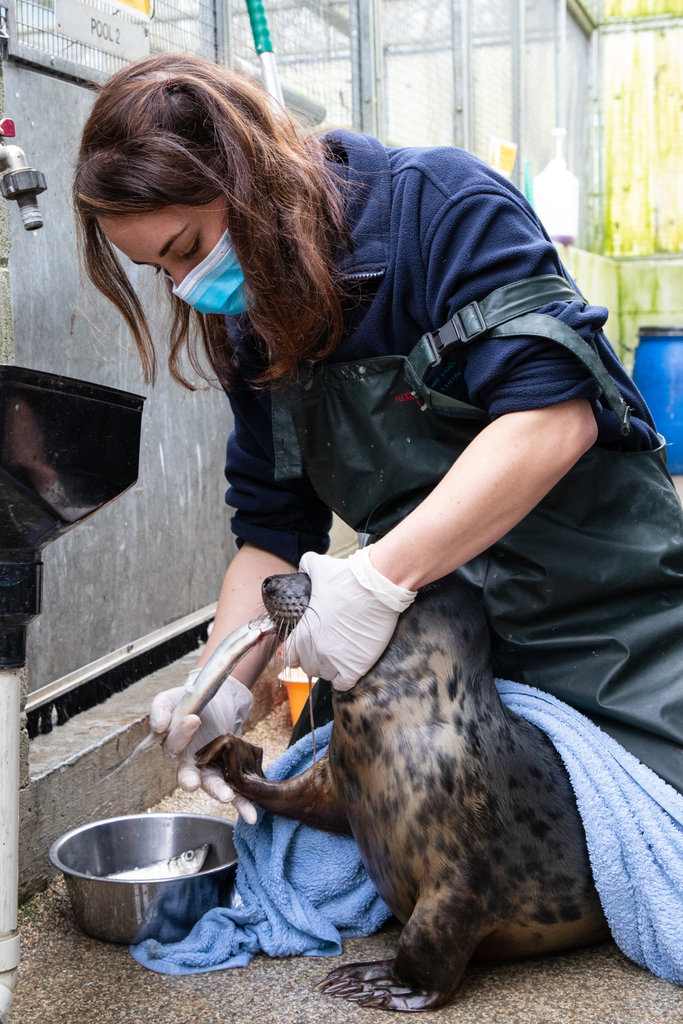There are two species of seal that are native to the UK
Step 1: Visiting the seal
If someone calls about a seal, a specialist visits the animal to check if they’re OK. This might be an RSPCA inspector or an animal rescuer from another charity like the British Divers Marine Life Rescue.
We keep an eye on any pups that appear underweight, dehydrated or poorly. Seal pups can take care of themselves after just 3-4 weeks, but if they appear very young they might have been abandoned, so we keep an eye out for mum.
We also ask members of the public to keep their distance. Seals can get scared if people come too close.
Test your knowledge
test your knowledge
Grey seals and common/harbour seals are native to the UK.
Step 2: Time for the rescue
Two or more animal rescuers will guide the seal into a carrier, which they carry carefully to a van. Then it’s off to a wildlife centre where the seal will be treated by a wildlife vet
“The seals in our care all have unique personalities, like pet dogs. Their playful and inquisitive nature is a big help in the wild. It helps them learn as they hunt, which is essential because their mums leave them at such a young age.”


Step 3: Settling in
Once a seal has safely arrived at an RSPCA wildlife centre, it’s time for a check up at the vet. If a seal is badly injured, their wound is treated at once and we give them pain medicine, antibiotics and salt baths.
Once they’ve seen a vet, we move some seals into a safe indoor cubicle which makes it easier for carers to check up on them and help them at mealtimes. Young pups need to be tube-fed a mixture of liquidised fish every three hours. And older ‘teenage’ seals sometimes need someone to help them open their mouths before we ‘post’ fish in!
Step 4: Taking the plunge
Medium size seals are moved to a small outdoor pool – the perfect place to start swimming practice and underwater feeding. They practise using their wiry whiskers to find fish. In the wild, this will help them track prey up to 100m away!
Then, as they grow, they’re moved to a bigger deeper pool so they can become fit and strong before they return to the wild.
Did you know?
A seal in an RSPCA centre can eat up to 30 herring a day!
Step 5: Freedom at last!
Once seals are fit and healthy, and pups have reached 35-40kg – they’re ready for release!
We drain their outdoor pools, so they’re easier to catch, before guiding them into carriers. Then, we drive the seals to the beach, lift their carriers off our vans and release them right next to the sea so they can head straight for the water. It’s great to see them swimming free!
Want to help? If you spot a seal who seems sick or injured, don’t approach them. Ask your grown-ups to help you read the advice here.


